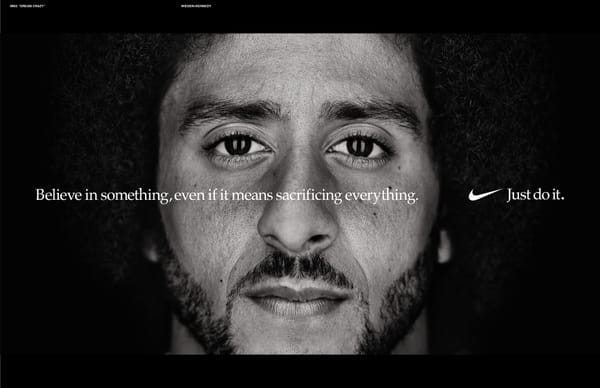Platform-Specific Storytelling Strategies: Tailoring Your Tale for Digital Success
This guidebook will take you on a journey through the major digital platforms, exploring how to tailor your brand's story for maximum impact on each. From the visual feast of Instagram to the professional polish of LinkedIn.

Table of Contents
- Introduction
- The importance of platform-specific storytelling
- Overview of the guidebook's contents
- Understanding Platform Dynamics
- The unique storytelling environment of each platform
- Matching your brand story to platform strengths
- Instagram: Visual Storytelling Mastery
- Crafting a cohesive visual narrative
- Leveraging Stories, Reels, and IGTV for deeper engagement
- Case study: A small business's Instagram transformation
- Facebook: Building Community Through Stories
- Utilising long-form content and Live videos
- Strategies for encouraging meaningful interactions
- Practical exercise: Creating a story-driven Facebook campaign
- Twitter: The Art of Micro-Storytelling
- Crafting compelling narratives in 280 characters
- Using thread stories for deeper engagement
- Case study: A small business's viral Twitter moment
- LinkedIn: Storytelling for B2B Success
- Balancing professionalism with authentic storytelling
- Leveraging LinkedIn Articles for thought leadership
- Practical exercise: Developing your brand's LinkedIn voice
- TikTok: Riding the Wave of Trending Stories
- Understanding and leveraging TikTok's unique culture
- Creating story-driven challenges and trends
- Case study: A small business's TikTok breakthrough
- YouTube: Long-Form Video Storytelling
- Crafting episodic content and series
- Optimising video titles and descriptions for storytelling
- Practical exercise: Storyboarding your YouTube series
- Podcasting: Auditory Storytelling Techniques
- Structuring a narrative-driven podcast
- Using sound design to enhance storytelling
- Case study: A small business's podcast success story
- Cross-Platform Storytelling: Weaving a Cohesive Narrative
- Adapting core stories for different platforms
- Creating a multi-platform storytelling calendar
- Practical exercise: Mapping out a cross-platform story campaign
- Measuring Success: Platform-Specific Metrics
- Key performance indicators for each platform
- Tools for tracking and analysing story performance
- Conclusion: Crafting Your Multi-Platform Storytelling Strategy
- Recap of key points
- Next steps for implementation
1. Introduction
In today's digital landscape, storytelling isn't one-size-fits-all. Each social media platform is a unique stage, with its own audience, rules, and expectations. Mastering the art of platform-specific storytelling is like being a versatile actor, able to captivate whether you're in an intimate theatre or a grand amphitheatre.
Imagine a street performer who can seamlessly transition from juggling for a crowd of tourists to performing a poignant monologue for a small group of art enthusiasts. This adaptability is what your brand needs in the digital world. Your core story remains the same, but how you tell it changes dramatically depending on where you're telling it.
This guidebook will take you on a journey through the major digital platforms, exploring how to tailor your brand's story for maximum impact on each. From the visual feast of Instagram to the professional polish of LinkedIn, from the rapid-fire exchanges on Twitter to the immersive world of YouTube, we'll uncover the secrets to storytelling success across the digital spectrum.
As writer and futurist Alvin Toffler once said, "The illiterate of the 21st century will not be those who cannot read and write, but those who cannot learn, unlearn, and relearn." In the world of digital storytelling, this ability to adapt and evolve is crucial. So, let's embark on this journey of learning, unlearning, and relearning, as we explore how to make your brand's story resonate on every digital stage.
2. Understanding Platform Dynamics
Before we dive into specific platforms, it's crucial to understand the broader landscape of digital storytelling. Each platform is a unique ecosystem with its own culture, language, and unwritten rules. Success lies in understanding these nuances and adapting your story accordingly.
The Unique Storytelling Environment of Each Platform
Think of each social media platform as a different neighbourhood in a vast digital city. Each has its own vibe, its own local customs, and its own way of communicating:
- Instagram: The artistic district, where visual aesthetics reign supreme.
- Facebook: The town square, where communities gather and share.
- Twitter: The bustling café, where quick wit and timely comments are valued.
- LinkedIn: The business convention, where professional insights are exchanged.
- TikTok: The youth centre, where creativity and trends evolve at lightning speed.
- YouTube: The television network, offering both short-form and long-form content.
- Podcasts: The radio station, where audio storytelling creates intimate connections.
Understanding these environments is key to telling your story effectively in each space.
Matching Your Brand Story to Platform Strengths
The key to platform-specific storytelling is not to change your core message, but to adapt how you deliver it. Here's how to approach this:
- Identify Your Core Story Elements: What are the key themes, values, and messages that define your brand?
- Understand Platform Strengths: What does each platform do best? Is it visual storytelling? Professional networking? Real-time updates?
- Align Story Elements with Platform Strengths: How can you best express your core story using the unique features of each platform?
- Respect Platform Culture: How can you tell your story in a way that feels native to each platform?
As anthropologist Margaret Mead once observed, "Always remember that you are absolutely unique. Just like everyone else." The same is true for platforms – each is unique, and your storytelling should respect and leverage that uniqueness.
Practical Exercise: Platform Story Mapping
Let's put this into practice:
- List your brand's top 3 story elements (e.g., sustainability, innovation, community impact).
- For each major platform you're considering, write down its key strengths and cultural norms.
- Brainstorm how you could express each story element on each platform, respecting its unique environment.
For example, a sustainable fashion brand might share:
- Behind-the-scenes glimpses of eco-friendly production on Instagram Stories
- In-depth articles about sustainable practices on LinkedIn
- Quick eco-fashion tips on Twitter
- Upcycling tutorials on YouTube
Remember, the goal is not to be everywhere, but to be where your audience is, speaking their language and respecting the platform's culture. As we delve into each platform in the following sections, keep this adaptive mindset at the forefront. Your story is the heart of your brand – these platforms are simply different stages on which to perform it.
3. Instagram: Visual Storytelling Mastery
Welcome to Instagram, the visual storyteller's paradise. Here, a single image can speak volumes, and a well-crafted series can take your audience on a journey without a single word. Let's explore how to make your brand's story shine in this visual-first platform.
Crafting a Cohesive Visual Narrative
On Instagram, consistency is key. Your feed should tell your brand's story at a glance. Here's how to create a cohesive visual narrative:
- Develop a Visual Style Guide: Define your brand's colour palette, preferred filters, and composition styles.
- Plan Your Grid: Use tools to visualise how your posts will look together in the grid view.
- Use Visual Themes: Create recurring visual themes that represent different aspects of your brand story.
- Balance Variety and Consistency: Mix up your content types while maintaining a consistent overall look.
Remember, as photographer Ansel Adams said, "There are no rules for good photographs, there are only good photographs." The same applies to your Instagram feed – focus on quality and authenticity above all.
Leveraging Stories, Reels, and IGTV for Deeper Engagement
Instagram offers various formats to tell your story. Here's how to use them effectively:
- Stories: Use for day-to-day narratives, behind-the-scenes glimpses, and interactive elements like polls or questions.
- Reels: Create short, engaging videos that showcase your products or services in action. Ideal for tutorials, tips, or trend-based content.
- IGTV: Dive deeper with long-form content. Great for interviews, detailed how-tos, or mini-documentaries about your brand.
Case Study: A Small Business's Instagram Transformation
Let's look at how "Wildflower Wellness," a small herbal tea company, transformed their Instagram presence:
Wildflower Wellness struggled with a scattered Instagram presence, posting sporadically without a clear visual strategy. They decided to overhaul their approach:
- They developed a visual style guide centred around earthy tones and natural textures.
- They created content pillars: tea brewing tips, herbal education, and customer stories.
- They leveraged Stories for daily tea rituals and behind-the-scenes glimpses of their production process.
- They used Reels to share quick herbal remedies and tea blending tips.
- They launched an IGTV series called "Tea Talks," featuring interviews with herbalists and wellness experts.
The result? In six months, their follower count grew by 200%, engagement rates increased by 150%, and their online sales saw a 75% boost. More importantly, they built a community of herbal tea enthusiasts who felt deeply connected to the brand's story and mission.
Practical Exercise: Instagram Story Storyboard
Create a storyboard for a week's worth of Instagram content:
- Choose a theme for the week that aligns with your brand story.
- Plan out 7 feed posts, each building on the theme.
- Outline daily Stories that complement the feed posts.
- Include at least one Reel and one IGTV concept.
Remember, on Instagram, every image, video, and story should serve your larger brand narrative. As author Nancy Duarte says, "The most effective stories are those that create an intense, personal connection with the audience." On Instagram, that connection starts with visuals.
By mastering the art of visual storytelling on Instagram, you can create a powerful, engaging presence that not only showcases your products or services but also immerses your audience in your brand's unique story and world.
4. Facebook: Building Community Through Stories
Facebook, the world's largest social network, is like a digital town square where people gather to share, discuss, and connect. For businesses, it's an opportunity to not just tell your story, but to build a community around it. Let's explore how to leverage Facebook's unique features for storytelling that engages and grows your audience.
Utilising Long-Form Content and Live Videos
Facebook's algorithm favours meaningful interactions, making it ideal for deeper storytelling:
- Long-Form Posts: Use Facebook's generous character limit to share more detailed stories. These could be customer testimonials, behind-the-scenes glimpses, or your brand's origin story.
- Facebook Live: Host live Q&A sessions, product launches, or behind-the-scenes tours. Live videos create a sense of immediacy and allow for real-time interaction with your audience.
- Facebook Stories: While ephemeral, Stories are great for day-to-day narratives that give a more casual, intimate look at your brand.
As marketer Seth Godin says, "Marketing is no longer about the stuff that you make, but about the stories you tell." On Facebook, you have space to tell those stories in depth.
Strategies for Encouraging Meaningful Interactions
Engagement is key on Facebook. Here's how to encourage it:
- Ask Questions: End your posts with questions to encourage comments and discussion.
- Use Polls: Facebook's poll feature is great for getting quick feedback and encouraging participation.
- Respond Promptly: Engage with comments to foster a sense of community and show that you're listening.
- User-Generated Content: Encourage customers to share their own stories and experiences with your brand.
Practical Exercise: Creating a Story-Driven Facebook Campaign
Let's create a week-long Facebook campaign that tells your brand story:
- Day 1: Share your origin story in a long-form post, including photos from your early days.
- Day 2: Go live to give a tour of your workspace or introduce your team.
- Day 3: Post a customer success story, tagging the customer if possible.
- Day 4: Share a "day in the life" photo album showcasing your team at work.
- Day 5: Host a Q&A session in the comments of a post about your product or service.
- Day 6: Share a video testimonial from a satisfied customer.
- Day 7: Wrap up with a thank you post, highlighting key moments from the week and asking followers to share their own stories.
Remember, the goal is to create a narrative arc that engages your audience throughout the week, encouraging them to interact and become part of your brand's story.
Case Study: Building a Facebook Community
Let's look at how "Urban Sprouts," a small urban gardening supply store, built a thriving Facebook community:
Urban Sprouts started by creating a Facebook group called "City Green Thumbs" alongside their business page. They used this group to:
- Share daily gardening tips through short videos and infographics.
- Host weekly live Q&A sessions with gardening experts.
- Encourage members to share photos of their urban gardens and troubleshoot problems together.
- Organise virtual "garden tours" where members could showcase their spaces.
- Run monthly challenges, like growing a specific herb or creating a balcony butterfly garden.
The result? In one year, their group grew to 50,000 active members. This community became a valuable resource for Urban Sprouts, providing product ideas, authentic user-generated content, and a loyal customer base. Their Facebook page saw a 300% increase in engagement, and their website traffic from Facebook grew 250%.
Remember, on Facebook, your goal is not just to tell your story, but to invite your audience to become a part of it. As community builder Carrie Melissa Jones notes, "Community is about the experience of belonging." Use your Facebook presence to create that sense of belonging around your brand.
By focusing on meaningful content and fostering genuine interactions, you can turn Facebook into a powerful platform for not just sharing your brand's story, but for writing new chapters together with your community.
Certainly! I'll continue from Section 5 of the guidebook "Platform-Specific Storytelling Strategies: Tailoring Your Tale for Digital Success":
5. Twitter: The Art of Micro-Storytelling
Welcome to Twitter, the platform where brevity meets wit, and stories unfold in real-time. Here, your brand's tale isn't just told; it's woven into the fabric of ongoing conversations. Let's explore how to make your story shine in 280 characters or less.
Crafting Compelling Narratives in 280 Characters
Twitter's character limit might seem restrictive, but it's an opportunity for creative storytelling. Here's how to make every character count:
- Start with a Hook: Your first few words need to grab attention in a crowded feed.
- Use Strong Verbs: Action words pack a punch and convey more in less space.
- Employ Contrast: Set up a 'before and after' or 'problem and solution' in a single tweet.
- Leverage Hashtags: Use relevant hashtags to join larger conversations and extend your story's reach.
As Ernest Hemingway famously demonstrated with his six-word story ("For sale: baby shoes, never worn."), impactful narratives can be incredibly concise.
Using Thread Stories for Deeper Engagement
When 280 characters aren't enough, Twitter threads allow you to tell longer stories:
- Episodic Storytelling: Break a longer narrative into a series of tweets, each building on the last.
- Behind-the-Scenes Threads: Use threads to give a step-by-step look at your processes or a day in your business.
- Educational Threads: Share tips or insights related to your industry, with each tweet covering a different point.
- Customer Story Threads: Tell a customer's journey with your product over a series of tweets.
Case Study: A Small Business's Viral Twitter Moment
Let's look at how "Paw Prints Pet Photography," a small pet photography studio, created a viral moment on Twitter:
Paw Prints started a thread called "Expectations vs. Reality in Pet Photography." Each tweet in the thread showed a side-by-side comparison:
Tweet 1: "Expectation: Majestic dog posed perfectly. Reality: Blur of fur as dog chases squirrel. #PetPhotographyLife"
Tweet 2: "Expectation: Cat gazing soulfully into camera. Reality: Back of cat's head as it ignores everything. #CatsBeingCats"
The thread continued with 10 such comparisons, each showcasing both the challenges and the charm of pet photography. The last tweet included a call-to-action to book a session, with a link to their website.
The result? The thread went viral, garnering over 100,000 retweets and 500,000 likes. Paw Prints saw a 400% increase in website traffic and a 200% increase in bookings in the month following the thread. More importantly, it established their brand voice as relatable, humorous, and authentic.
Practical Exercise: Crafting Your Twitter Story
Let's practise creating a compelling Twitter story for your brand:
- Craft a Single-Tweet Story: Write a 280-character tweet that encapsulates a key aspect of your brand story. Remember to start with a hook and end with a call-to-action.
- Plan a Thread: Outline a 5-tweet thread that tells a longer story about your brand, product, or a customer experience. Each tweet should be able to stand alone but also contribute to the larger narrative.
- Develop a Hashtag: Create a unique hashtag for your brand that could be used to tie together various tweets and encourage customer engagement.
Remember, on Twitter, your story is part of a larger conversation. As journalist and author Jeff Jarvis says, "Twitter is a collective conversation, not a broadcast." Engage with others, respond to mentions, and don't be afraid to show your brand's personality.
By mastering the art of micro-storytelling on Twitter, you can create memorable moments that resonate with your audience and extend your brand's reach far beyond your immediate followers. In the next section, we'll explore how to adapt your storytelling for the professional world of LinkedIn.
6. LinkedIn: Storytelling for B2B Success
LinkedIn is the world's largest professional network, where business minds converge to share insights, make connections, and drive industry conversations. Here, your brand's story needs to balance professionalism with authenticity, providing value while building relationships. Let's explore how to craft narratives that resonate in this unique business-focused environment.
Balancing Professionalism with Authentic Storytelling
On LinkedIn, your story needs to wear a business suit, but it shouldn't lose its human touch. Here's how to strike that balance:
- Share Professional Journey Stories: Highlight your company's milestones, challenges overcome, and lessons learned.
- Showcase Employee Stories: Put a human face on your brand by sharing stories of team members' growth and achievements.
- Demonstrate Thought Leadership: Share insights and predictions about your industry, positioning your brand as a knowledgeable leader.
- Address Industry Challenges: Tell stories about how your brand is tackling common problems in your field.
As Simon Sinek, author and motivational speaker, says, "People don't buy what you do; they buy why you do it." On LinkedIn, your 'why' should shine through in every story you tell.
Leveraging LinkedIn Articles for Thought Leadership
LinkedIn's article feature allows for deeper, long-form storytelling:
- Industry Trend Analysis: Write in-depth pieces about emerging trends in your field.
- Case Studies: Share detailed accounts of how your products or services have solved real business problems.
- Behind-the-Scenes Features: Offer a look into your company culture, innovation processes, or corporate social responsibility initiatives.
- Expert Interviews: Conduct and share interviews with industry leaders, including those within your own company.
Practical Exercise: Developing Your Brand's LinkedIn Voice
Let's work on crafting your brand's professional storytelling voice:
- Define Your Professional Persona: If your brand were a business professional, who would they be? What's their background, expertise, and communication style?
- Create a Value Statement: In one sentence, describe the unique value your brand brings to your industry.
- Draft a Thought Leadership Piece: Outline a LinkedIn article that showcases your brand's expertise. Include:
- A attention-grabbing headline
- An introductory paragraph that sets up a problem or trend
- 3-5 main points or insights
- A conclusion that ties back to your brand's value
- Plan a Week of LinkedIn Content: Create a content calendar for a week, including:
- 2-3 status updates sharing industry news or company updates
- 1 employee spotlight post
- 1 long-form article
- 2-3 interactions with other companies' or thought leaders' posts
Remember, on LinkedIn, your story should position your brand as a valuable contributor to your industry's conversation.
Case Study: B2B Storytelling Success on LinkedIn
Let's examine how "EcoPackage Solutions," a small sustainable packaging company, used LinkedIn to establish themselves as industry thought leaders:
EcoPackage Solutions developed a content strategy centred around educating their industry about sustainable packaging options. They:
- Published a weekly LinkedIn article series called "Sustainability Spotlight," each focusing on a different aspect of eco-friendly packaging.
- Shared employee stories highlighting their team's expertise and passion for sustainability.
- Created infographics showcasing statistics about the environmental impact of traditional vs. sustainable packaging.
- Engaged in industry discussions, offering insights and respectfully challenging outdated practices.
- Launched a video series interviewing clients about their journey towards more sustainable packaging solutions.
The result? Over six months, EcoPackage Solutions saw a 300% increase in profile views, a 250% growth in followers, and a 180% increase in website traffic from LinkedIn. More importantly, they secured three major B2B contracts directly through LinkedIn connections, with clients citing their thought leadership content as a key factor in their decision.
As author and marketer Ann Handley advises, "Make the customer the hero of your story." On LinkedIn, this means focusing on how your expertise and solutions can help other businesses succeed.
By crafting professional, value-driven stories on LinkedIn, you can position your brand as a trusted expert in your field, opening doors to new business opportunities and partnerships. In our next section, we'll explore how to adapt your storytelling for the fast-paced, trend-driven world of TikTok.




